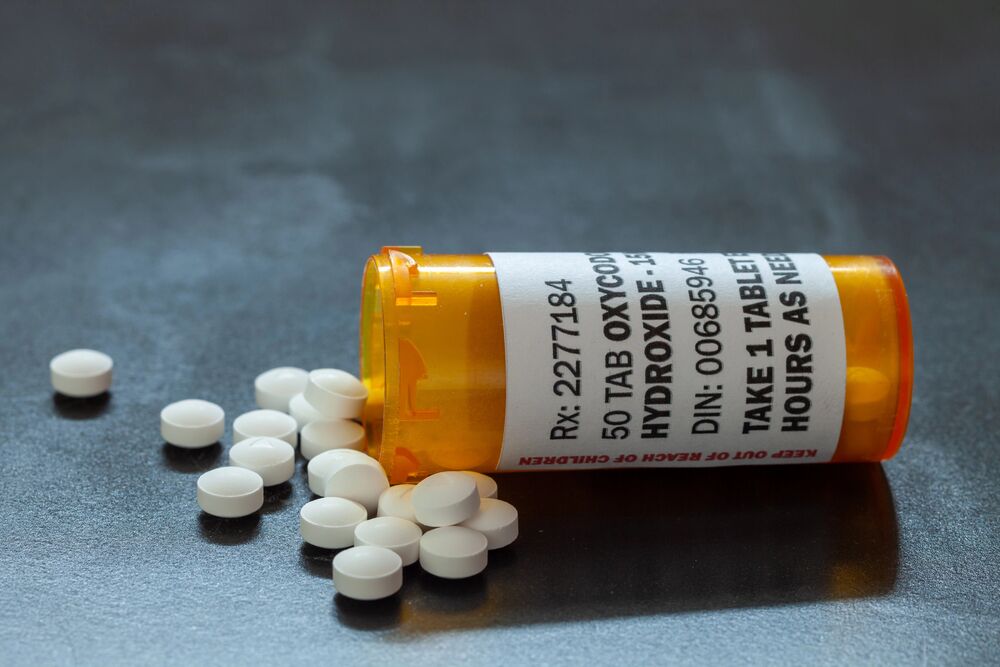If you’re concerned you or a loved one is struggling with Oxycodone misuse contact us for help today.

Oxycodone, a powerful prescription opioid found in medications such as Percocet and OxyContin, is highly addictive and poses significant risks for abuse and addiction. It is commonly prescribed to treat moderate to severe pain but has a high potential for dependency.
If you or a loved one is struggling with an oxycodone addiction, call Transformations Treatment Center in Delray Beach, FL, for help today.
Oxycodone is a semi-synthetic opioid derived from thebaine, an organic compound found in opium, and it is one of the most commonly prescribed prescription pain relievers. It is classified as a Schedule II controlled substance due to its high potential for abuse. Oxycodone is prescribed for chronic pain and is available in various forms, including tablets and liquid. This prescription drug is commonly used for pain relief but can lead to severe withdrawal symptoms and a substance use disorder.
Oxycodone affects the brain’s opioid receptors, altering pain perception and inducing feelings of euphoria, which contributes to its high potential for abuse and addiction. Continued opioid misuse can lead to tolerance, physical dependence, and addiction as the body becomes reliant on the drug to produce dopamine, a neurotransmitter associated with pleasure. This is why managing oxycodone addiction is crucial.

Oxycodone abuse can lead to severe health complications, including respiratory depression and increased overdose risk. Prolonged use can cause significant damage to vital organs such as the liver and kidneys and may lead to chronic constipation, which can result in serious digestive issues. Additionally, oxycodone affects mental health, often leading to depression, anxiety, and other psychiatric disorders. The risk of contracting infections is higher due to compromised immune function, especially in those who inject the drug. Recognizing the dangers of oxycodone use is crucial for anyone struggling with abuse or caring for someone who does.
Transformations Treatment Center in Delray Beach, FL, is dedicated to providing comprehensive addiction treatment to address these risks effectively. Our holistic approach includes medication-assisted treatment and personalized therapy to ensure long-term recovery and health restoration.
Oxycodone abuse can lead to several physical and behavioral changes, including:
Oxycodone abuse can cause immediate and severe short-term health issues, including:
Long-term oxycodone addiction can lead to chronic health problems, such as:
Overdosing on oxycodone can be fatal. Recognize the signs and seek immediate medical help. Symptoms include:
Withdrawal symptoms from oxycodone can be challenging and may include:
While oxycodone detox is a crucial first step, it is just the beginning of the recovery journey. True healing requires addressing the underlying causes of addiction, developing healthier coping mechanisms, and building a supportive recovery community. After completing oxycodone detoxification, individuals at Transformations Treatment Center are encouraged to transition into our comprehensive behavioral health treatment programs, which include therapy, counseling, life skills training, and relapse prevention strategies. Our holistic approach to treating substance use disorders ensures that every aspect of an individual’s well-being is addressed, setting the foundation for a successful and lasting recovery to prevent relapse.
At Transformations Treatment Center, we address the comprehensive health risks associated with oxycodone addiction through personalized treatment plans that include medication-assisted treatment and holistic therapies. We aim to help individuals achieve long-term sobriety and improve their overall well-being.
If you or a loved one is struggling with oxycodone addiction in Delray Beach, FL, or nearby areas like Palm Beach County and West Palm Beach, contact us today at (800) 270-4315. Let us support you in reclaiming your life from addiction and embarking on a healthier, drug-free future.
Following detox, our oxycodone addiction treatment program options include:
Our PHP for oxycodone substance abuse in Delray Beach, FL, is a structured yet versatile treatment alternative, bridging the gap between inpatient and outpatient settings. This program is ideal for individuals needing significant support but seeking more autonomy than inpatient care provides. PHP participants engage in intense therapeutic activities during the day and return to a sober living environment at night. Key components of this program include:
Our Intensive Outpatient Program (IOP) for oxycodone addiction rehab provides a structured yet flexible treatment approach for those transitioning from higher levels of care or those needing to balance treatment with personal responsibilities. Emphasizing recovery skill reinforcement and daily life integration, our IOP includes:
MAT uses medications like buprenorphine and methadone to manage withdrawal symptoms and reduce cravings. Naltrexone may also be used to block the effects of opioids. This method is especially beneficial in helping patients through difficult oxycodone withdrawal.

Successful addiction recovery requires adherence to a comprehensive treatment plan and ongoing support. At Transformations Treatment Center, our oxycodone rehab in Delray Beach, FL, provides a supportive environment to help you achieve and maintain sobriety. Our team works to empower you to live a drug-free life full of promise and hope. We offer a wide range of resources, including outpatient programs, relapse prevention strategies, and individualized treatment plans tailored to your specific needs. Our dedicated team of medical professionals and addiction specialists are committed to helping you navigate the challenges of recovery, ensuring you have the tools and support necessary for a successful, long-term recovery journey.
Successful addiction recovery requires adherence to a comprehensive treatment plan and ongoing support. At Transformations Treatment Center, a leading drug rehab center in Delray Beach, FL, we provide a supportive environment to help you achieve and maintain sobriety.
Whether you are dealing with severe withdrawal symptoms or need support through an intensive outpatient program, our treatment options are designed to help you succeed in overcoming oxycodone addiction. Contact us today to begin your journey toward recovery.